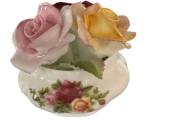Tinsmiths like Girsha, would sell their wares by walking from village to village with their products hanging from a metal rod balanced on their shoulders. It was a trade generally passed down from generation to generation.
Jews in the shtetl were subject to discrimination, antisemitism, intolerable sanctions, and pogroms. The severity of each depended on the mood of surrounding villagers. Peasants living in the shtetl bore considerable responsibility for this situation if for no other reason than their inactivity and seemingly uncaring attitude towards their neighbours. They offered little support when marauding villagers burnt homes, destroyed synagogues and slaughtered Jews simply because of their religion.
Jews attempted to form self-defence groups but with little impact. The authorities placed restrictions on the importation of arms into the shtetl thus preventing their formation. While Jews continued to practice their religion, it was often done clandestinely. Prayers were done silently except for the one that specifically bestowed health on local authorities and Czar Nicholas. Not that it protected them.
While their lives were far from those portrayed in Fiddler, one aspect was realistic. The value of livestock, particularly cows. Owners of cows automatically acquired high status in the shtetl. It was one of the primary items that defined wealth and success second only to owning land. The authorities, seeking to generate income, placed a tax on anything they could and soon imposed one on farm animals, including horses, cows, goats, and chickens. However, only those owned by Jews. Russian landowners also taxed Jews who brought animals to graze at their pastures.
Cows often lived under the same roof as their owners like members of an extended family. As one might imagine, milk became a prized commodity. Not only for its nutritional value but as something that could be bartered for food and other goods.
Things are often viewed through too narrow a prism – exactly what occurred in the shtetl with the little white milk jugs. They were seen as vessels for milk without considering their potential different uses.
This is not to fault anyone. When you’re struggling to put food on the table your imagination tends to be stifled.
When they began to look at them differently, which was completely by chance, people’s mindsets shifted.
Members of the shtetl had gathered one evening to discuss ways of protecting themselves against marauding peasants and the increasing frequency of pogroms.
It became obvious that guns and ammunition were needed, however they could not be brought into the shtetl legally. Every wagon was searched by officers who patrolled the roads in and out of the shtetl. It would take courage and bravery along with a bit of ingenuity.
Reuven the carpenter fashioned a false bottom on several carts to conceal the contraband. In addition, bottles of liquor distilled in the shtetl would be offered to the patrols to ensure that wagons would be sent on their way without a problem. Which is exactly what happened.
Distributing the ammunition to each of the homes was another issue that Boris, the blacksmith, solved by fashioning a metal insert which could be placed – inside the milk jugs!




